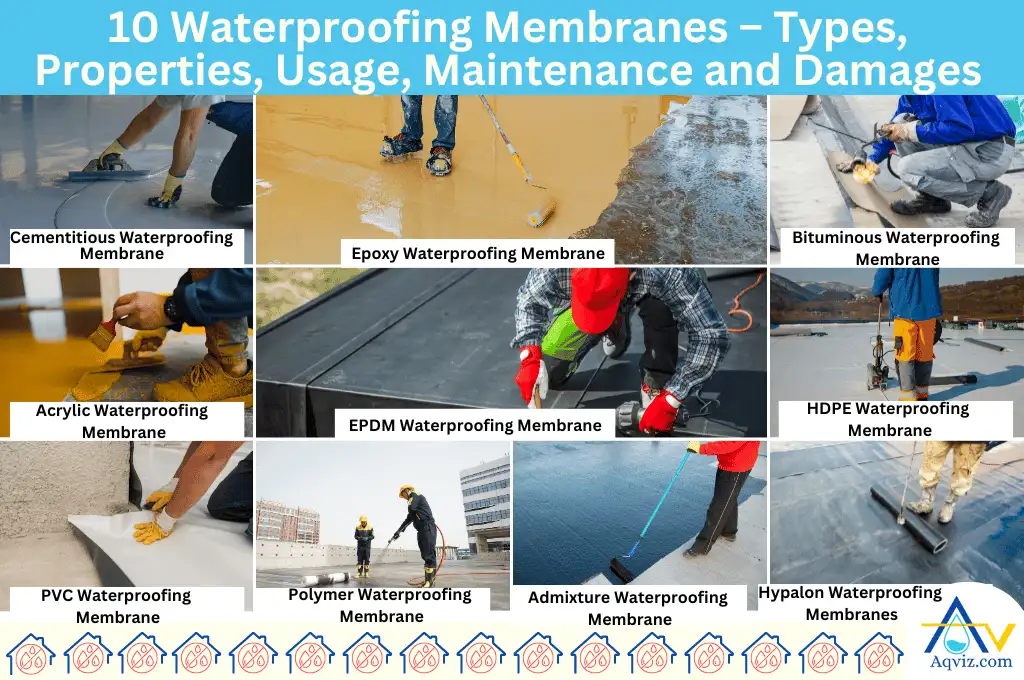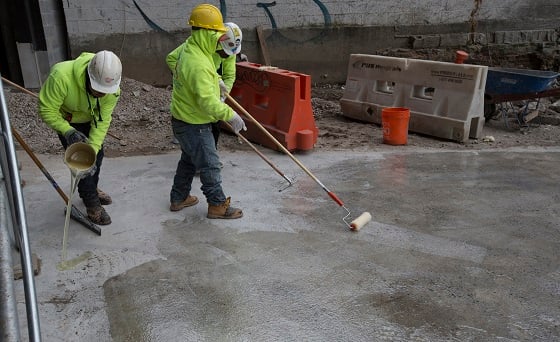Sump pump installation & replacement Omaha: The Beginner’s Guide
Wiki Article
Sorts of Waterproofing: Checking Out the Different Techniques and Their Applications
Waterproofing is a vital facet of building and upkeep. It secures frameworks from the harmful impacts of water damage. There are numerous methods readily available, each with its one-of-a-kind applications and advantages. From membrane layer systems to cementitious solutions, comprehending these alternatives is necessary for effective execution. The choice of waterproofing method can significantly affect longevity and long life. Discovering these numerous techniques reveals their distinctive advantages and potential challenges, prompting more consideration of ideal services.Membrane Waterproofing Systems
Membrane waterproofing systems serve as a critical barrier versus water invasion in various frameworks. These systems usually include slim sheets made from materials like rubber, polycarbonate, or asphalt, which are put on surface areas to avoid wetness penetration. They can be set up above or below grade and are specifically efficient in locations vulnerable to high water direct exposure, such as basements, roof coverings, and foundations.The installment procedure involves cleaning up the substratum, using adhesives or primers, and exactly fitting the membrane layer to ensure complete coverage. Membrane layer systems can be either completely stuck, mechanically connected, or laid loose, relying on the details demands of the project. They supply longevity and adaptability, suiting architectural motions without endangering their waterproofing capacities. Furthermore, these systems can be strengthened with added layers for enhanced protection. Ultimately, membrane layer waterproofing systems are important for securing frameworks versus water damages and preserving lasting stability.Liquid-Applied Waterproofing Coatings
Liquid-applied waterproofing coverings give a functional option for protecting surfaces from water seepage - Basement waterproofing Omaha. These coverings include fluid products that, when used, develop a smooth, adaptable membrane layer. Their versatility enables for application on various substrates, including concrete, steel, and wood. The coatings can be made use of in varied settings, from residential to industrial setups, making them appropriate for roofing systems, foundations, and below-grade structures.One substantial benefit of liquid-applied layers is their capability to comply with uneven forms and pass through splits, developing a robust obstacle against wetness. They commonly display exceptional adhesion residential properties and resistance to UV radiation, guaranteeing long life and toughness. In addition, the application procedure is typically simple, enabling quick installment and reduced labor costs. This approach also decreases the danger of water merging, as the continual layer efficiently directs water away from vulnerable areas. Overall, liquid-applied waterproofing layers are an effective selection for thorough water protectionCementitious Waterproofing Solutions

Cementitious waterproofing solutions provide a robust option for structures calling for reputable wetness protection. These systems mainly use a mix of concrete, sand, and chemical additives to develop a waterproof barrier. They are typically related to surfaces such as concrete walls, foundations, and floors, providing a sturdy, long-lasting protection versus water intrusion.One of the essential benefits of cementitious waterproofing is its ease of application; it can be used utilizing a brush, roller, or spray, making it ideal for numerous job dimensions. Additionally, this method is compatible with many surface areas and can frequently be utilized combined with other waterproofing techniques.Cementitious options are especially effective in settings where water exposure is a problem, such as basements or below-grade structures. Their excellent adhesion homes ensure that they bond well with substratums, offering a solid and impenetrable layer against dampness infiltration.
Bentonite Waterproofing
Bentonite waterproofing is an extremely efficient method that uses sodium bentonite clay to develop an all-natural barrier against water. This strategy manipulates the one-of-a-kind buildings of bentonite, which expands upon contact with water, sealing any type of prospective leaks and stopping dampness infiltration. It is frequently made use of in various go to this website applications, consisting of foundation walls, passages, and retaining wall surfaces, where water resistance is essential.Bentonite can be applied in numerous types, such as panels or blankets, giving versatility in installation. Its capability to self-seal makes it an appealing choice for locations based on shifting soil or rising and falling water levels. Furthermore, bentonite waterproofing is eco-friendly, as it is a natural material that does not present harmful chemicals into the surroundings.Drain and Outside Waterproofing Equipments
Efficient waterproofing commonly includes a combination of approaches, including drainage and external systems. Water drainage systems, such as French drains pipes and sump pumps, are made to reroute water far from structures, minimizing hydrostatic pressure against foundations. These systems are important in avoiding water buildup that can bring about architectural damage and mold and mildew growth.External waterproofing, on the various other hand, entails using safety barriers to the structure's exterior. Techniques such as the installment of water resistant membranes, coatings, or sealers can help prevent water seepage. This method not only protects the foundation yet likewise improves the general sturdiness of the structure.Together, drainage and outside waterproofing systems develop an extensive service to handle water successfully. By carrying Web Site out these strategies, building proprietors can safeguard their financial investments versus the destructive results of wetness, guaranteeing long-term stability and safety and security for their buildings.Often Asked Inquiries
Exactly how Do I Choose the Right Waterproofing Approach for My Job?
Choosing the ideal waterproofing approach relies on factors such as task type, ecological problems, spending plan, and wanted long life. Reviewing these facets enables notified decisions customized to specific requirements and needs.
Can Waterproofing Be Applied in Cold Climate Conditions?
Waterproofing can be used in cool weather conditions, however it calls for particular materials and techniques. Cold temperature levels may affect treating times and bond, demanding careful option of items created for low-temperature application.
What Are the Common Indications of Waterproofing Failure?
Usual signs of waterproofing failure consist of noticeable water stains, peeling paint, moist smells, mold and mildew growth, and fractures in walls or structures. Sump pump installation & replacement Omaha. These indications recommend that moisture is permeating the obstacle, endangering its effectivenessHow Much Time Does Waterproofing Last Before Needing Upkeep?
The longevity of waterproofing varies, normally lasting in between 5 to one decade. Factors such as worldly high quality, ecological problems, and maintenance methods influence its toughness, necessitating regular inspections to ensure reliable protection against water breach.Exist Eco-Friendly Waterproofing Options Available?
The inquiry of environment-friendly waterproofing choices exposes a growing interest in lasting products (Yard drainage Omaha). Various all-natural materials, such as plant-based sealers Get More Info and recycled products, provide reliable services while lessening environmental impact, attracting eco conscious consumersReport this wiki page